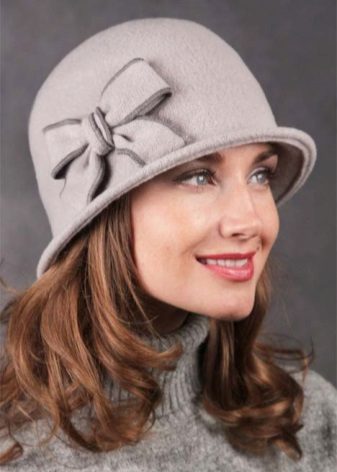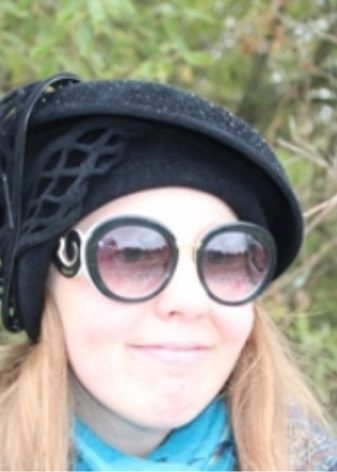The strength of every nation is in its traditions. These are holidays, lifestyle, cuisine, and, of course, clothes. All nationalities carefully, from generation to generation, transmit the features and subtleties of their national costume, shoes, accessories and hats, including hats.
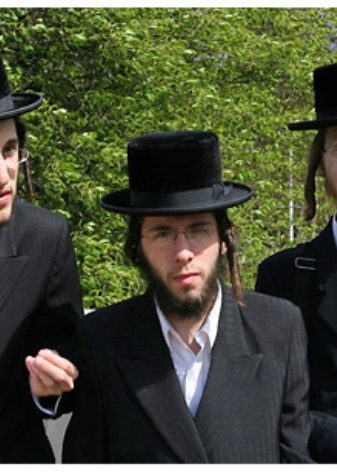
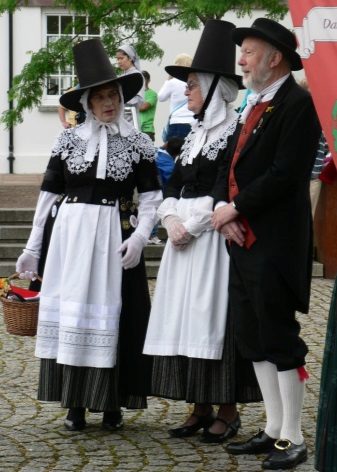
Hat as part of a national costume
Currently, the reconstruction of the national costume is gaining great popularity. This phenomenon has embraced many enthusiasts who set themselves the task of reconstructing, preserving and conveying to the contemporaries the traditions of their ancestors. That is why more and more often in museums and exhibition halls there are expositions dedicated to the national costume of different nationalities, and in particular, to headdresses.
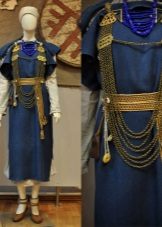
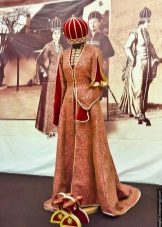
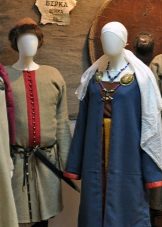
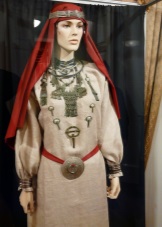
Visitors to such exhibitions can see with their own eyes a variety of hats, caps, caps, caps, caps, berets, bowlers, dressings, kokoshniks from around the world. They were made of wool, silk, felt, palm leaves, knitted fabric, cork, fur and other materials. By their appearance, it was possible to determine the age, social, marital status of a person.
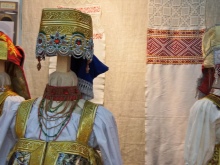
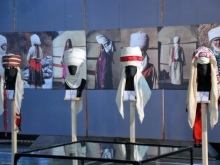

Some hats, caps and other hats are a real historical and cultural value. And the hats of individual nations are a truly unique sight. For example, the calabash drink vessel that is familiar today for some Ethiopian peoples is also a lightweight, durable headdress for protection from rain or sun.

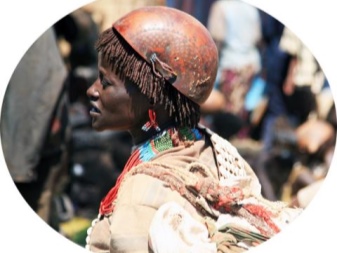
The traditional headdress of the leaders of the tribes of Nigeria is a huge crown, decorated with beads. It is decorated with figures of animals, birds and people made of beads. The thick veil covering the leader’s face is also created from several thin bead pendants.
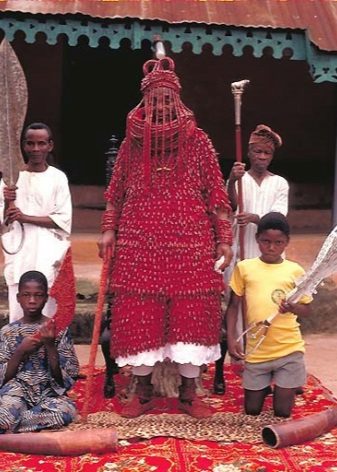

One of the most beautiful hats is the hat worn by a young Chinese woman on her wedding day. The hat is made of pure silver and decorated with the image of a long-tailed bird. Such a piece of clothing weighs about 10 kilograms, and in order to acquire it for its daughter, many Chinese people begin to save money from almost her birth.

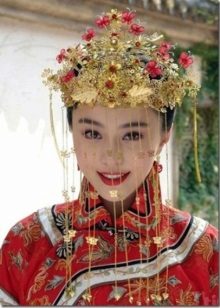
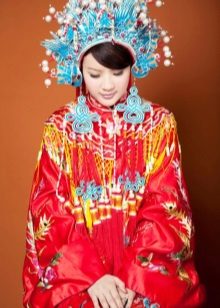
History of hats in Russia
The first hats appeared in Russia around the 30s of the 17th century. Then they were purchased for the court, as well as officers of some regiments. Basically they were made of dense materials, for example, felt or felt. Particularly valuable hats were decorated with beaver down.
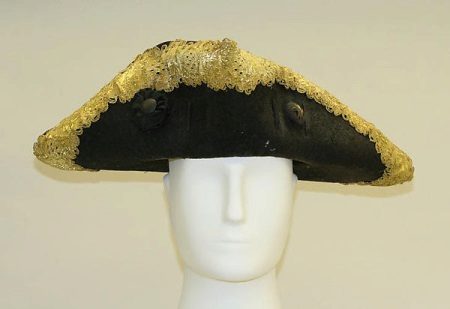
At the very beginning of the XVIII century, thanks to Peter I, hats gradually began to spread outside the palace and the army. Hats were made of rabbit skin, wool, beaver fur and tucked from one side. Gradually, hats changed, new models appeared, for example, cocked hats.
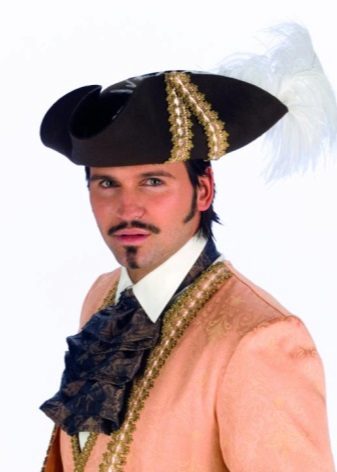
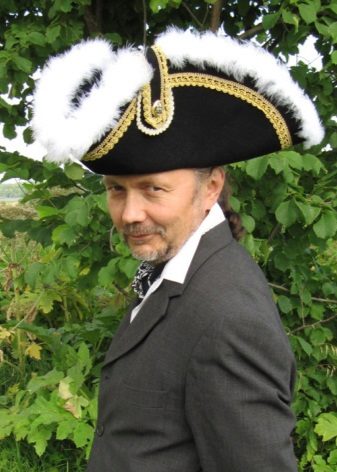
The shape and height of the tulle and the width of the fields, the very shape of the headgear were modified. For example, one of the popular models of the mid-18th century was a buckwheat hat, which looked like an English cylinder. And the hat got its name due to the fact that it was made from sheep’s wool, and it was molded on pots for buckwheat.
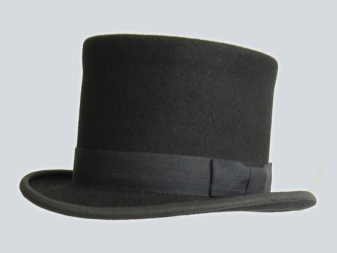
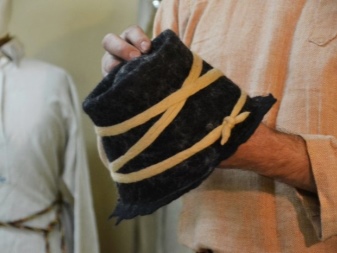
In the 19th century, cylinders became fashionable. They were worn not only by representatives of the aristocratic or diplomatic circle, but also by all those who wanted to look noble and modern. Fashion still did not stand still, either oriental fez or student caps were popular.
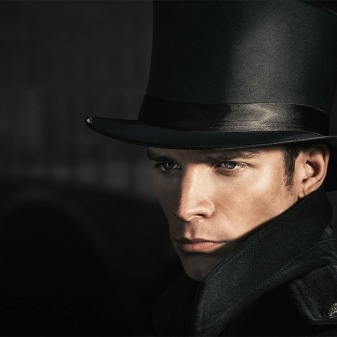

At the beginning of the 20th century, a hat was still a mandatory attribute of a man’s wardrobe. Cylinders and neat pots were popular. By the middle of the last century, the hat remained an invariable element only in the wardrobe of wealthy men. A felt hat perfectly complemented the elegant three-piece suit.


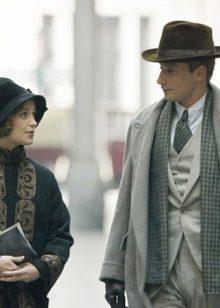
In the second half of the 20th century, straw hats, which could often be found on the beach, in the city, and tourists, came into fashion. Today, a hat is not a mandatory element of a men's or women's wardrobe. For the most part, it can be found as an addition to a men's suit or part of a beach set.

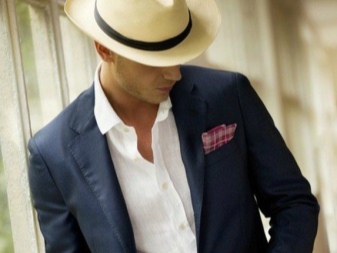
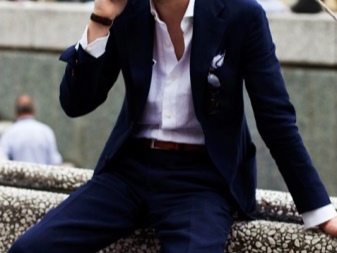
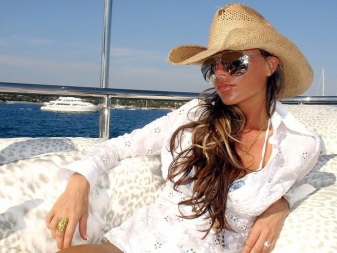
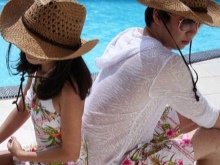
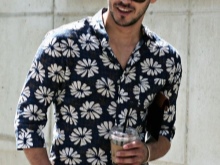
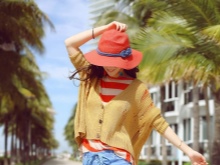
Models of the peoples of the world
Vietnamese
The Vietnamese national hat is a cone-shaped headpiece made of straw. Traditionally, it was considered the constant companion of peasants: it perfectly protected a person working on the field from the rays of the hot sun or heavy rain. At the same time, a hat was used as a basket for collecting fruit or a jug of water.


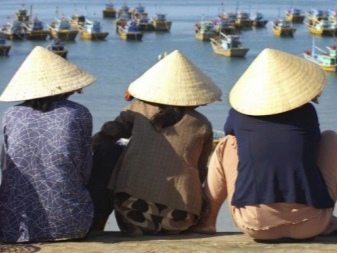

The appearance of this hat is associated with an old Vietnamese legend, according to which, once upon a time, one woman wore a hat of wide leaves on her head. The hat was magical: wherever this woman appeared, clouds immediately disappeared, and the weather became clear and sunny. Since then, almost all Vietnamese began to wear such a hat.
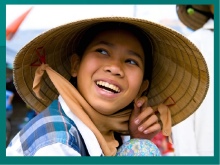

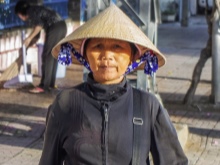
The process of creating this hat is interesting. For this, underdeveloped bamboo leaves were taken and immersed in water to prevent delamination. Then they were cleaned and dried to white. To preserve color, the leaves were treated with sulfur, and then divided into the thinnest stripes, from which they then sewed a hat.
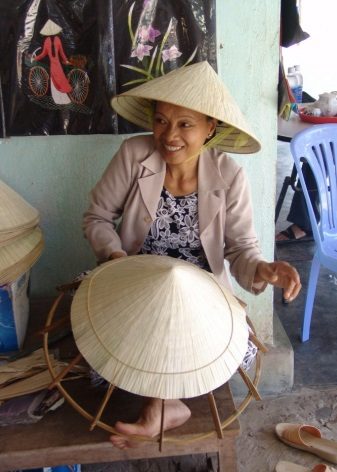
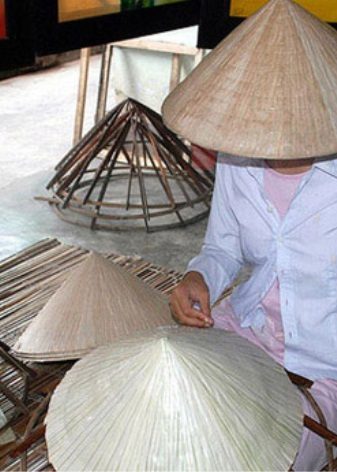
Once such a hat adorned the head of ordinary peasants, today it can be easily found in combination with elegant evening dresses. You can meet this headdress almost everywhere, including souvenir shops.
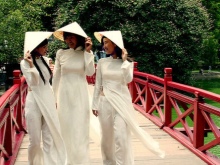
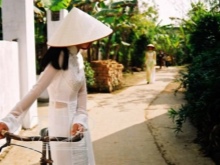
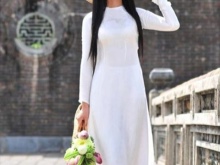

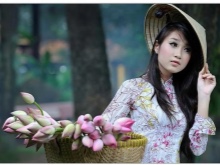
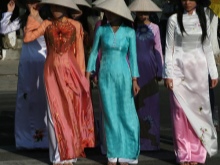
Tyrolean
A hat with a trapezoid shape and a small longitudinal fold. Its narrow margins are tucked on the sides and back. The traditional hat of the Alpine region is made of soft dark green felt and decorated with a twisted lace, tassel or feathers. Depending on the social position, such a hat could be sewn of different materials and decorated with an ordinary green thread or a gold tangle.

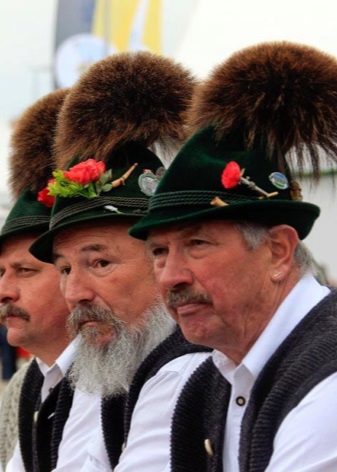
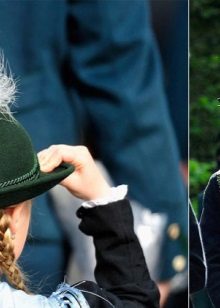


A similar hat is also popular in Bavaria, so it is often called Bavarian.
Chinese
According to the ancient canons of etiquette, the head of the Chinese should not be uncovered. To do this, many different hats were invented and created that correspond to the situation, age or position in society. For example, young men wore small metal caps on their heads. Young people from noble families - caps made of gold and precious stones.
When the young man turned 20, a special ritual of putting on a hat (“guanli”) was carried out with him. The head of the Chinese emperor was decorated with "mian" - a design, each part of which had a certain meaning.
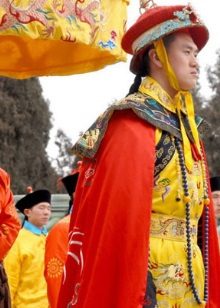

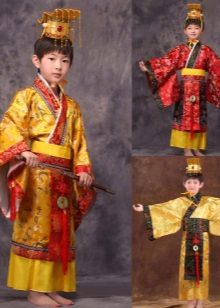
During the Middle Ages, the most popular headdress of ordinary Chinese people was the reed hat or felt cap. Most often, the caps had a conical shape, which is perfectly preserved to this day. Small Chinese hats made on a cardboard basis and covered with silk are also very famous.
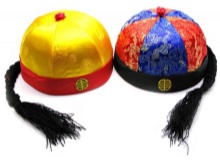
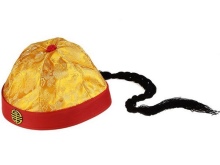

Spanish
A luxurious black hat with wide brim and a red satin ribbon wrapped around a tulle is certainly one of the main decorations of a traditional Spanish costume. A gold cord decorating the fields gives the headdress even more elegance and dignity.
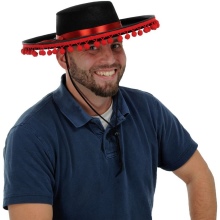
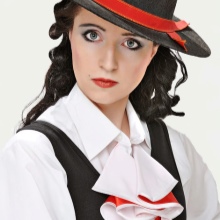
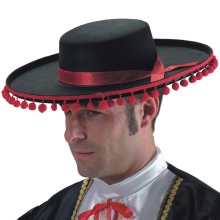
In addition to a wide-brimmed hat, the Spaniards wore triangular caps and fitters (flat hats made of thick cloth). They were decorated with bright braid, cords, unusual prints and tied under the chin.
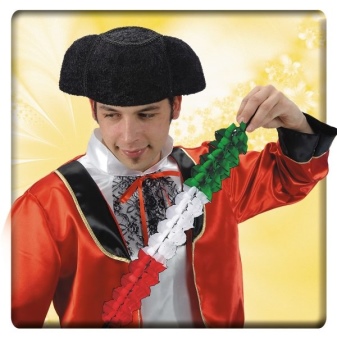
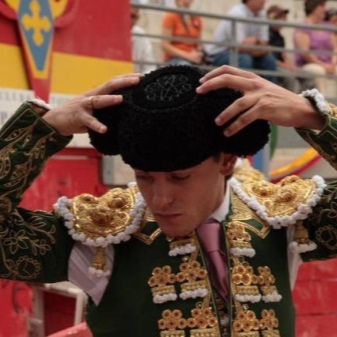
The traditional headdress of the Spanish women was the coffee house de papos, which consisted of a tattoo with a metal frame and a bedspread.
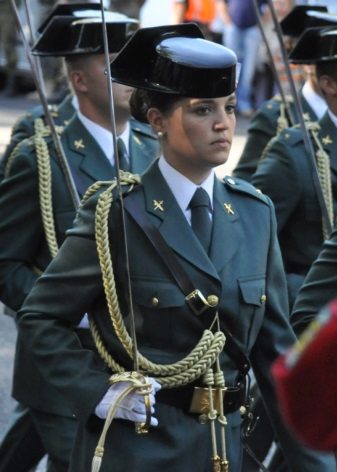
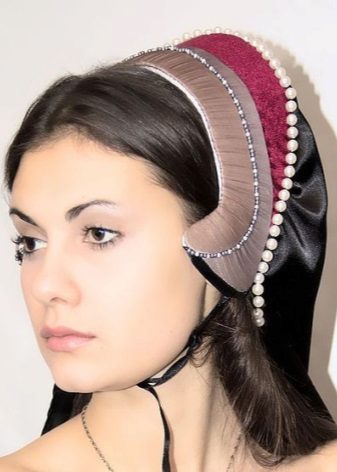
Mexican
At the mention of the Mexican traditional hat, the name “sombrero” immediately comes to mind. Despite the fact that this item is part of the Mexican national costume, its roots originate in Spain.
"Sombra" in translation means "shadow". Therefore, initially the Spaniards called "sombrero" all hats with very wide brim. The classical model really has fields casting a shadow on the face and shoulders of a person. Fields can be flat or slightly turned outward. The hat is complemented by a cord or ribbon for tying under the chin.
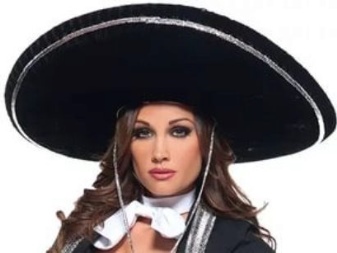
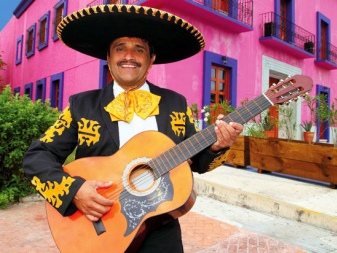
By the way, sombrero is part of the national costume not only in Mexico, but also in other countries. For example, in Colombia this hat is made of cane and painted in black and white. In Panama, this hat is woven manually and the more thin turns are used to create a hat, the higher its quality and cost.
A variety of materials are used to make sombrero. Poor people weave a hat from ordinary straw; the nobility buys hats from felt or velvet. Sombrero is decorated with embroidery with gold threads, flowers, and other ornaments. The tulle can be flat or slang elongated and pointed.
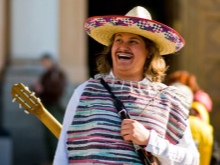
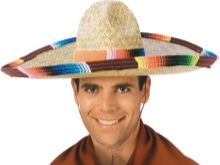
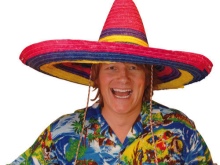
Today, sombrero is not only an element of the Mexican costume, it is also an invariable attribute of a summer wardrobe, and an excellent memorable souvenir, and even a part of the interior made in ethnic style.
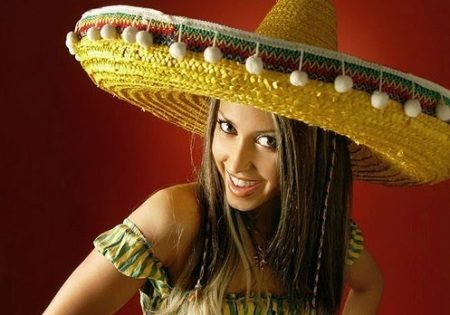
Japanese
If you set a goal and remember the traditional Japanese costume, then you will immediately remember kimono, obi and other elements, but not a headdress. Indeed, hats were not an indispensable part of the national Japanese costume. But the hairstyles, especially for men, were of great importance. The ancient Japanese often wore loose loose long hair that could be pinned into a bun or braided.
In the fourteenth and fifteenth centuries, hairstyles became more complex, for their decoration were used combs and hairpins, special rollers to give volume.
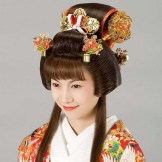
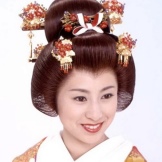
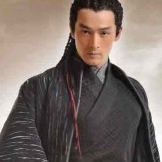
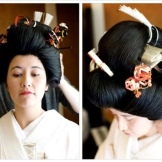
Australian
The traditional hat of Australians is called acubra. She is a model with a high tulle, a little concave in the middle and wide fields bent upwards. For its manufacture, Australian rabbit wool was used. This hat won worldwide popularity and fame after the premiere of the film "Dundee, nicknamed" Crocodile "."
Today this hat is still popular. It is worn by farmers, shepherds, hunters, etc.



German
The Germans of the XIX - early XX century had a fairly wide selection of various hats. The Germans wore shawls, caps and straw hats. The caps had a variety of shapes: from a tiny cap that barely covers the top of the head to luxurious golden caps all over the head. They were decorated with ribbons, lace, flowers.
In some areas of Germany, Germans wore fur hats made of beaver, marten, or otter. Both men and women wore them. Sometimes such caps were worn directly over the caps.
The traditional men's hat of the Germans had a small neat shape and bent fields on the sides and back. As a decoration, a lace around the tulle and a small bundle of bird feathers were necessarily used.
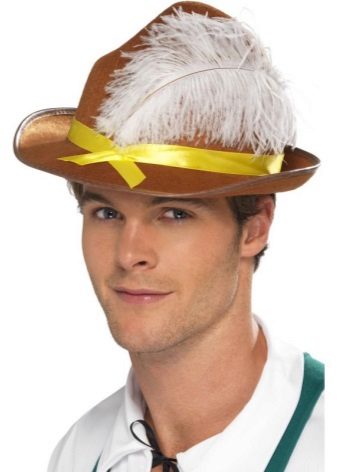

English
If we are talking about the headdress of an English gentleman, we always recall the neat hemispherical felt hat - a bowler hat. At the end of the 19th century, this elegant hat replaced the no less elegant, but more bulky cylinder. Today, an English bowler hat is rarely seen on the streets of London, this element of clothing remains only for solemn or ceremonial occasions.

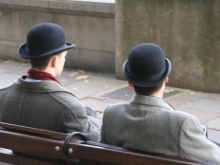

Bavarian
The traditional Bavarian hat was decorated with laces, feathers or hair brushes. A neat hat with small curved brim is still part of the everyday or holiday costume of a Bavarian resident. The Bavarians sacredly honor traditions, this also applies to a reverent attitude to national dress. Despite the fact that the traditional folk costume is quite expensive, wearing it is considered a sign of good taste.
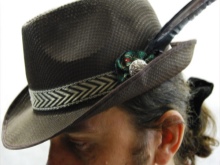
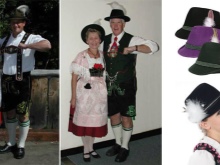
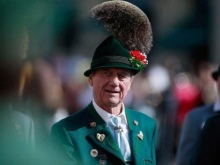
Italian hats
The headgear of Italians varies greatly depending on the area where they live. Women put on small caps, neat kokoshniks and bright bedspreads-capes on a metal frame.
Men wore different hats, tweed caps (coppola), rounded caps with a forward-hanging top and baggy berets, which, incidentally, can still be found today in some parts of Italy.
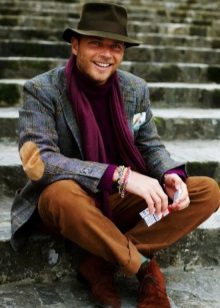
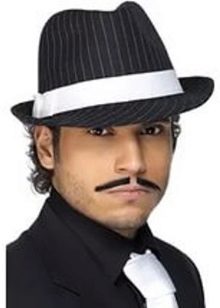

Asian
Asian hat is a generic name for models popular in East and Southeast Asia. Most often, it is a headdress of a conical shape, although sometimes there are models with highlighted tulle. The cone-shaped hat was originally intended to be protected from sunlight and heavy rain.
The materials used to create these hats are straw, palm leaves or textiles. For convenience, some models are additionally equipped with silk ribbons for tying under the chin.
For the most part, these models are made in natural colors, but sometimes they are painted, for example, in the colors of the state flag, favorite sports team, decorated with inscriptions, prints, etc.
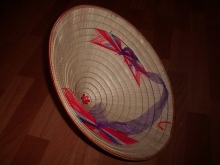
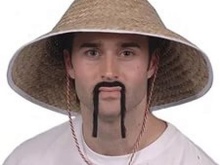
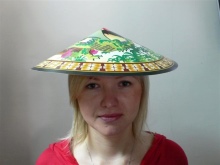
French
The traditional headdress of the French - boater is a hat of a rigid form with a cylindrical tulle and straight fields. The hat is made of straw. It first appeared around the middle of the 19th century and was first used by rowing athletes to protect from the sun. Boater got huge popularity already in the XX century, when the hat became a fashionable and stylish addition not only to men's, but also to women's costume. A big admirer of this elegant hat was, for example, fashion trendsetter Coco Chanel.
Boater is popular not only in France, but also in many other countries of the world. For example, in the USSR, the hat became insanely in demand after the movie “Old Man Hottabych” appeared on the screens of the country, where the kind wizard appeared before the audience in this French headdress.

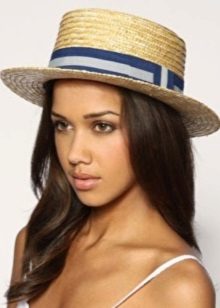

Hawaiian
Hawaii is the sun, hot summers, exotic vegetation and colorful light clothing.It is very easy to imagine a Hawaiian costume even for those who are not strong in knowledge about the traditions of different peoples of the world: these are light shirts, shorts, skirts and bustiers, painted with flowers, exotic vegetation, birds of paradise, etc. A mandatory element of the costume is a bright, fragrant wreath of flowers worn around the neck. As for the decoration of the head, then most often it is either a large fragrant exotic flower that adorns a woman's hairstyle, or a wreath of flowers.
For men, it is a straw hat decorated with fresh flowers or a floral border, ribbon and other decorations.
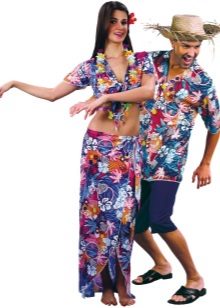

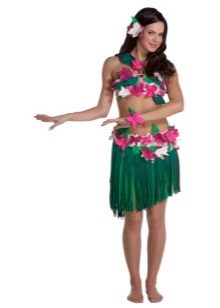
Czech
The popularity of Czech national clothing lies in the simplicity of the cut and the rich and varied finish. First of all, this is embroidery, and in different parts of the Czech Republic their ornaments were used. As for hats, for women it is a little hat decorated with an embroidered ribbon and a border of lace. As a rule, a beautiful cloak was worn under it. Married Czech women wore small hard-starched bonnets. For men, a high fur hat served as the headdress, or, on the contrary, a castor hat with curved fields and a low top.
